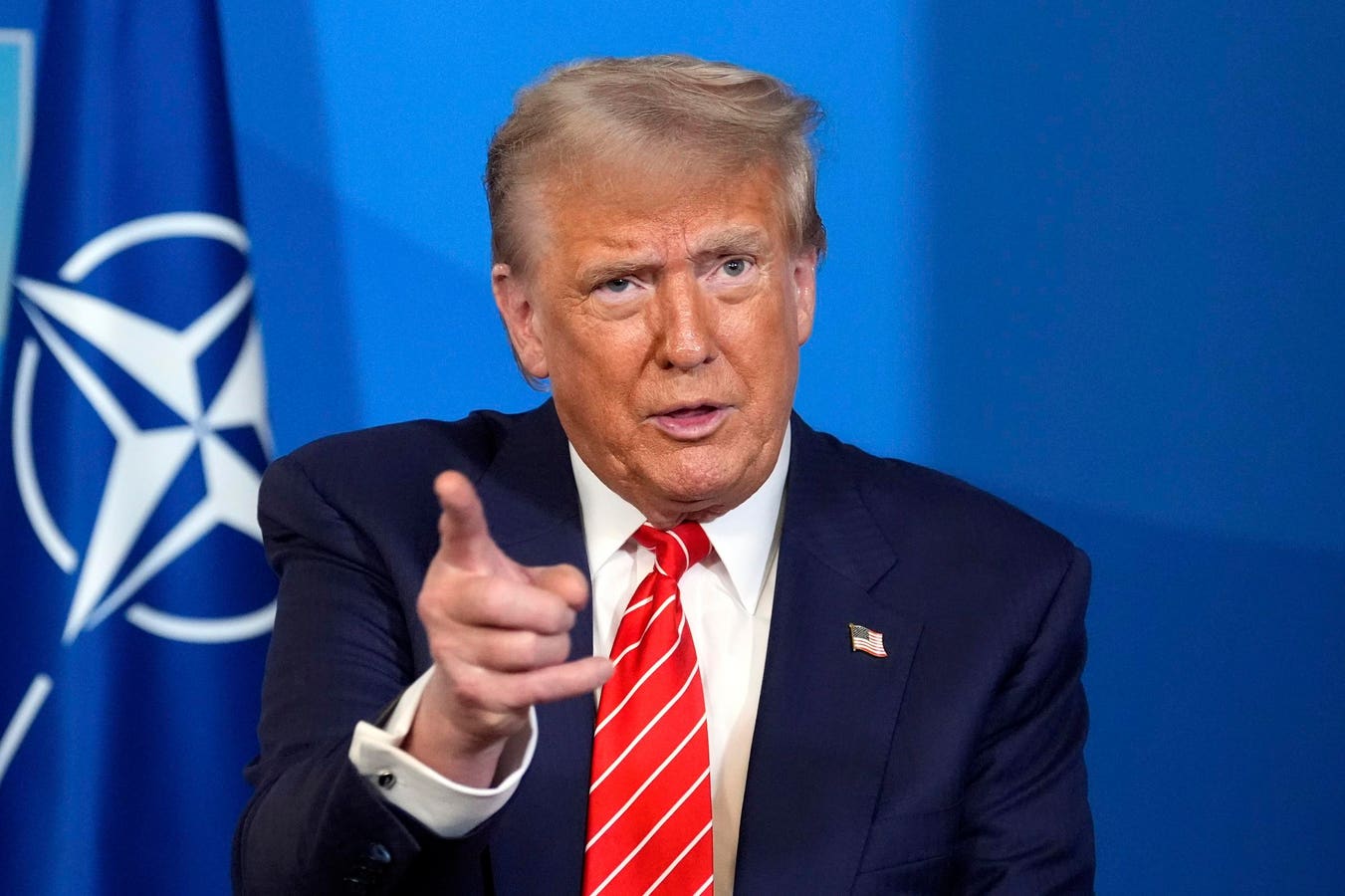THE HAGUE, Netherlands – President Donald Trump asserted on Wednesday that recent U.S. airstrikes resulted in the “complete obliteration” of Iran’s nuclear facilities, effectively ending hostilities between Iran and Israel. This statement comes amidst conflicting intelligence reports suggesting the attacks may have only temporarily hindered Iran’s nuclear program.
Breaking: U.S. Strikes and Their Immediate Impact
Speaking to reporters ahead of a NATO summit, Trump reiterated the success of the U.S. military operation, comparing its impact to the historical bombings of Hiroshima and Nagasaki. Despite intelligence assessments indicating minimal damage, Trump dismissed these findings as “very inconclusive.”
The president stated, “The intelligence says we don’t know…It could have been very severe.”
Trump further claimed that the bombings effectively halted the conflict between Iran and Israel, dismissing reports that Iran had relocated enriched uranium before the strikes. “They didn’t have a chance to get anything out,” he insisted.
Key Details Emerge
In a post on Truth Social, Trump criticized major news outlets for their coverage of the strikes, labeling them “FAKE NEWS” and accusing them of undermining what he called “one of the most successful military strikes in history.”
Steve Witkoff, Trump’s Special Envoy to the Middle East, appeared on Fox News to support the president’s claims, stating, “We put 12 bunker buster bombs on Fordow. There’s no doubt that it breached the canopy…and there’s no doubt that it was obliterated.”
Industry Response
The president’s statements have sparked a range of reactions. Iranian Foreign Minister Abbas Araghchi, speaking to Al-Araby al-Jadeed, warned that Iran would not return to negotiations if U.S. “aggression” continued. Meanwhile, Israel’s military chief, Eyal Zamir, indicated that while a significant phase had concluded, the focus would shift back to Gaza and dismantling Hamas.
Israel’s Defense Minister Israel Katz stated, “I have instructed the IDF to respond forcefully to the violation of the ceasefire by Iran through intense strikes against regime targets in the heart of Tehran.”
By the Numbers
- 12 bunker buster bombs reportedly used on Fordow
- 13 Iranian missiles intercepted by U.S. defenses
- No casualties reported from the attack on Al Udeid Air Force Base
What Comes Next
Iranian state media announced a ceasefire, although conflicting reports suggest no formal agreement has been reached. Trump declared on Truth Social that both sides agreed to a “Complete and Total CEASEFIRE” within 24 hours, emphasizing that “hardly any damage was done.”
Meanwhile, U.S. cities remain on high alert, with Miami temporarily shutting down its Metrorail due to a suspicious package. The Israeli military continues to target routes to Iran’s Fordow facility, aiming to obstruct access.
Background Context
Russian President Vladimir Putin condemned the U.S. strikes as “an absolutely unprovoked act of aggression,” while China criticized the move as a violation of international law. This international backlash highlights the complex geopolitical landscape surrounding the U.S.-Iran tensions.
According to NBC News, Iran had previously warned the U.S. of potential sleeper-cell activations during the G7 summit, indicating the high stakes involved in this ongoing conflict.
Regional Implications
The announcement of a ceasefire, albeit tentative, marks a potential de-escalation in the region. However, the situation remains fluid, with both sides poised to respond to any perceived violations. The international community continues to watch closely as developments unfold.
“CONGRATULATIONS WORLD, IT’S TIME FOR PEACE!” Trump declared in a hopeful message, signaling a desire for stability.
The story continues to develop as more information becomes available and both nations navigate the fragile ceasefire agreement.
